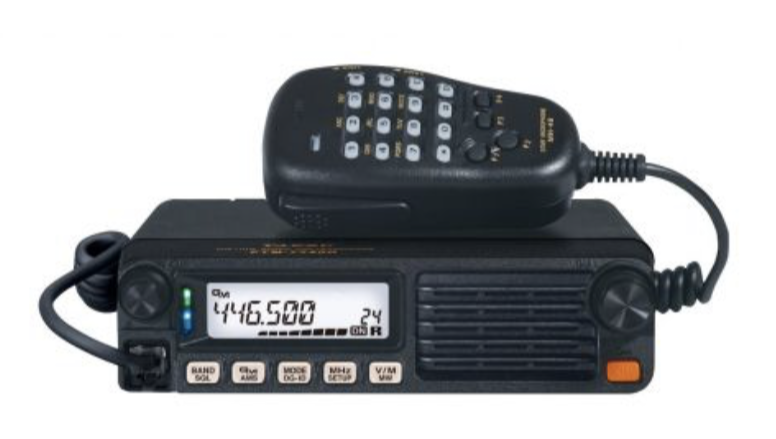The typical rubber ducky and whip antennas included with VHF/UHF handheld transceivers (see previous post here) are inherently inefficient and perform even worse when used indoors, often to the point of being useless. They are generally also limited to 5W of transmit power. For repeater and simplex operation indoors at a minimum an external antenna is needed and a bit more power is helpful as well. For this reason a typical next step for a new ham, after a handheld, is to get a mobile transceiver and install an antenna. Mobile transceivers are commonly used as basestation radios but are also useful when mobile in cars as well as for portable operation during emergencies or just when having fun in a park.
Although I gave a little consideration to an ICOM mobile radio I pretty quickly settled on an inexpensive Yaesu model, the FTM-7250, as it generally has more features for the price and includes a digital mode called C4FM with WIRES-X. More on this digital mode in a later post but a cool benefit is the ability to talk to other radio users anywhere in the world.

I spent a lot more time determining what antenna to get because, frankly, the antenna is more important than the radio. VHF/UHF antennas range from cheap to very expensive and from small to quite large and complex. In multiple instances I’ve seen that objective values show that the more complex antennas actually perform worse. So after many hours digging up data I decided to go with a DBJ-1 J-pole made by Dr. Fong. He is well known for his antenna and RF research and has published a number of papers on the subject of VHF/UHF antennas. He created a simple operation to sell antennas at-cost with the proceeds going to support his students. Once I had narrowed down my choice I emailed him about my purchase and in our email exchanges he proved to be extremely helpful and kind. I consider myself fortunate to have seen a live presentation by him on antenna design, delivered via Skype from his home, a couple of weeks ago. He explained things in simple language and even hams of long experience learned more about antenna design.
The J-Pole is installed in our attic with a coax run to my study. An outdoor installation would perform better but isn’t allowed by our HOA. My setup is more than sufficient to talk on the local repeaters using only 5W or 10W (the Yaesu can use up to 50W when needed). I’m happy with both the radio and antenna and have no plans for changes. And I’m enjoying talking to local operators.
Next post: My first HF radio